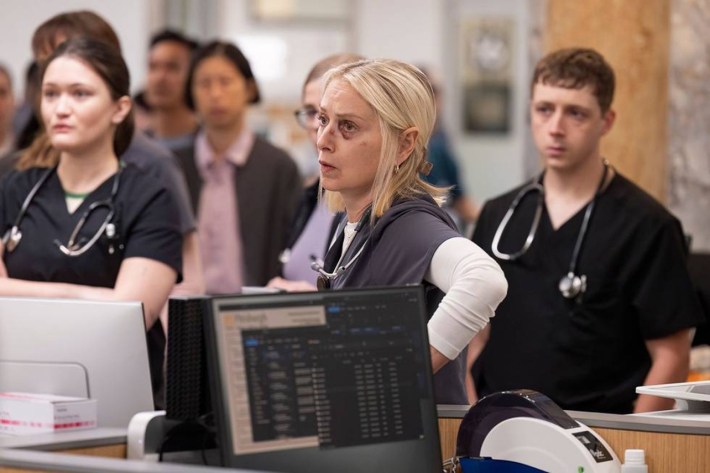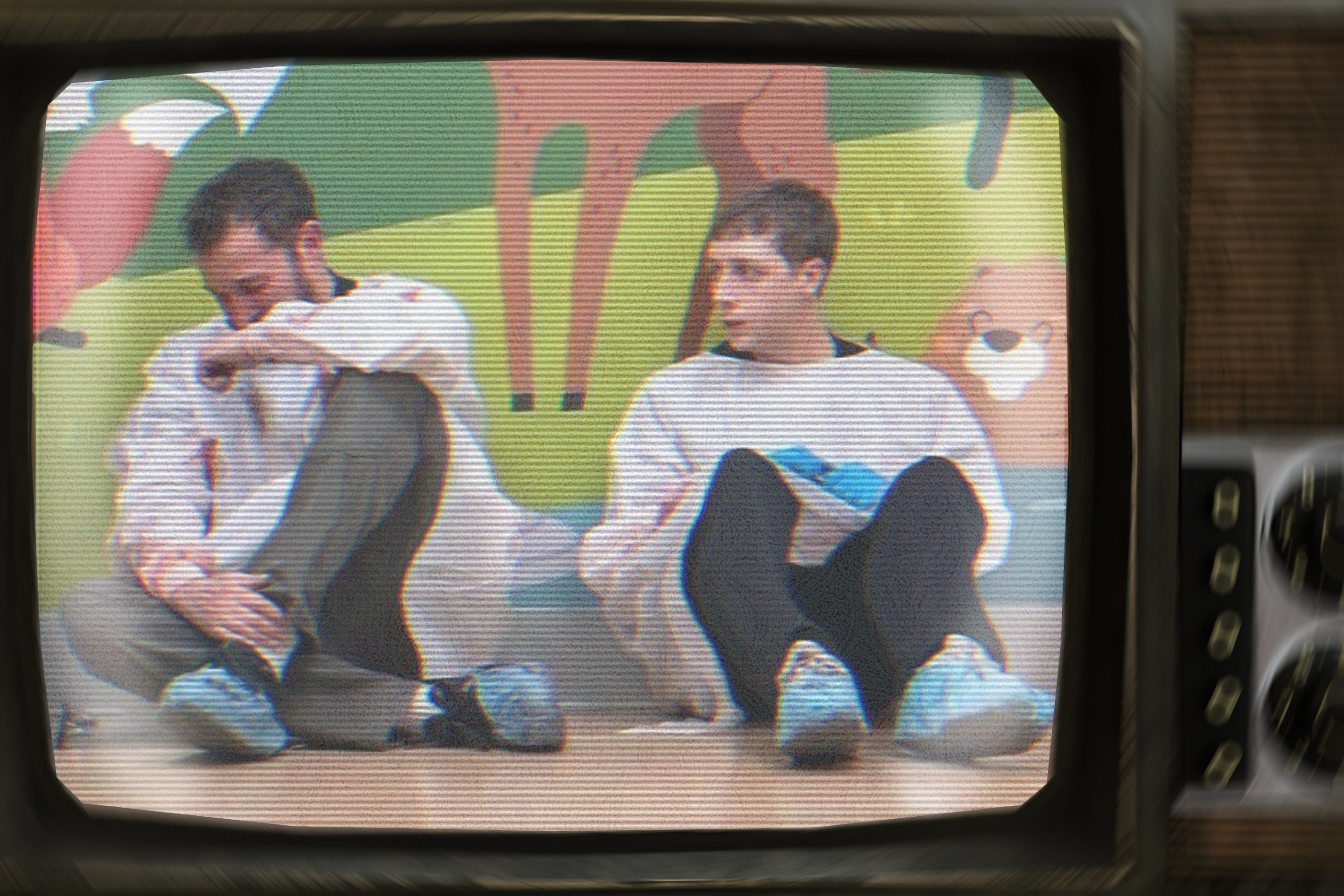It's odd to feel so strongly about something that sounds so obvious, but we're many years into the phenomenon of creators claiming they "really made a 10-hour movie" when they talk about seasons of TV, and it's started to infect every aspect of the medium. Whether we're talking about the binge-watching model creating entirely new pressures for storytellers or the Peak TV era pushing everything into something more cinematic, it's sometimes tough to remember what actual good TV — with all the powers the medium affords — looks like now.
Then something like The Pitt comes along.
You've no doubt heard about Max's new medical drama starring medical drama veteran Noah Wyle by now, even if you haven't watched it. My wife and I recommend it to just about everyone who brings up TV at this point, and we're not alone in that. It's one of those shows that's gripped the internet week by week, building up an audience that, with the April 10 season finale, seems poised to reach new heights as the first season wraps up and the second looms. Reviews for the show have been positive from the jump, but the real magic of the response to The Pitt has been the word-of-mouth build we've witnessed over the last 14 weeks, something that feels almost old-fashioned, like water cooler TV in a way that so many of the show's contemporaries simply can't recapture.
There are a lot of reasons for this, from the show's dynamite special effects to the ensemble cast to the careful balance of drama and humor that showrunner and creator R. Scott Gemmill and his team have applied to this story of emergency room medicine. For me, though, The Pitt's success really boils down to one key thing, something that became especially, dramatically clear in the final episodes of the season. This is, arguably more than any other streaming series out there right now, a show that thrives on the classic serialized TV model — and it works so well that every other TV creator out there should sit up and take note.
To talk about it in more detail, though, we're going to have to get into SPOILER TERRITORY, so if you haven't seen Episodes 12-14 of The Pitt yet, maybe come back and read this when you're caught up.

The Pitt gets a lot of mileage out of the sheer competency of not just its cast and crew, but the characters which populate its trauma center. Despite interpersonal drama and past failures coming back to haunt the crew at Pittsburgh Trauma Medical Hospital, these are people who are just plain good at their jobs. And they're not just good, they're seasoned and textured and built with a lived-in, warm quality that makes you follow them down every side story, no matter how small.
It starts with the show's lead, Dr. Robby (Wyle, scruffy and steel-eyed like a gunfighter), showing up to work with tunes in his ears and a hoodie on his back, and escalates in ways both predictable and not as the 15-hour shift The Pitt's first season chronicles in real-time gets underway. Casting Wyle is the show's first masterstroke, because it anchors our understanding of what we're about to see in a piece of pop culture history. Of course he's managing this ER. What else could TV's Noah Wyle possibly be doing? It's the kind of thing that helps you buy in almost instantly.
But The Pitt does not coast on Wyle's involvement, nor does it lean on him to carry the series despite his top billing. This is a true ensemble piece, and early on we meet a wide array of newcomers and veteran doctors, from the sensitive Dr. Mel King (Taylor Dearden) to the streetwise Dr. Cassie McKay (Fiona Dourif) to Dana Evans (Katherine LaNasa), the charge nurse responsible for the whole three-ring circus. I'm just scratching the surface of the cast here, and we could spend hours drilling down into each individual character's journey on this show, but the point is that The Pitt does an excellent job surrounding Wyle with scene stealers, any of whom could lead their own segment, their own episode, or even take over as the main character of the series.
Good television – and I'm talking proper, one-episode-per-week TV here, not just a story stretched into multiple parts – thrives on this kind of foundation, the sense that we're entering a world that was already there, populated by interesting people each with their own stories to tell. But those are just the groceries, the building blocks. It's what The Pitt does next that makes things really special.
This is a show about emergency medicine, told in real-time, which means that at any given moment the staff of the Pitt could be trying to save a child who just drowned in a swimming pool, or they could just be dealing with someone who has a bump on their head. Some stories end in neat, life-saving, easy to spot bows, while others end in tragedy, and still others are left dangling, waiting for a resolution that might never come, especially if the patient never shows for the follow-up. The sheer unpredictability of it all means that there's no set format for any given episode, no set pacing structure, because the show establishes early on that a patient with a minor injury could suddenly collapse into ruin, while a patient with something seemingly life-threatening could be saved in seconds by a quick, well-executed procedure. Nothing about anything the staff has to deal with is simple, and the constantly unspooling nature of all of these subplots and intertwining stories means that we as the viewer are conditioned to expect the unexpected. At a certain point watching The Pitt, even when a patient seems fine, you get conditioned to expect they'll take a turn, that the doctors will have to start scrambling again in a matter of seconds.
It's a marvelously suspenseful way to structure the show, and it allows the earlier episodes of the series to really play up the strengths of each main character. Robby is a skilled mediator, a good leader and teacher who, while carrying tremendous trauma, still believes in what he's doing and in what he can offer to the residents working for him. Mel is deeply sensitive and detail-oriented, McKay is a people-person with an eye for the larger context of a person's medical issues, and then there's Victoria Javadi (Shabana Azeez), a fast-track med student who's smart as a whip (even if she sometimes struggles to put those smarts into play at times). Then there's Dr. Whitaker (Gerran Howell), a farmboy turned med student who can't stop getting bathed in bodily fluids from patients, but proves a deft hand when a rat gets loose in the ER and he has to use his country know-how to catch it.

At its best in its early episodes, The Pitt takes all these ingredients and creates a seemingly freeform stew of medical drama, character study, and often tense standoffs between science and the unreasonable requests of grieving families. The real-time nature of the show (each episode covers an hour of the shift) enhances this sense that we're just sort of watching a typically unpredictable day unfold, and the show's ability to entrance us with an intubation or a quick surgical procedure means that the building ongoing storylines can just sort of simmer on the back-burner, waiting to pay off.
Then comes the mass casualty event.
At the end of its 11th episode, The PItt reveals that ongoing storylines involving Robby's stepson, a patient's son who exhibits potentially violent tendencies, and a musical festival in town have all converged into a mass shooter event, with Pittsburgh Trauma, taking the brunt of the patients. Episode 12, fiercely and beautifully directed by Amanda Marsalis, chronicles the first hour of care for these patients, many of them hopeless even before they get in the door, many others alive and improving but forever scarred. The episode unfolds with virtually no music, no bells and whistles, just doctors and nurses getting bloody and running out of supplies as they launch into what's basically a full two episodes of combat medicine, treating wounds as fast as possible and doing their damnedest just to keep people breathing. It's a riveting piece of television, expertly choreographed and underlining, once again, that these people are very, very good at their jobs. They know how to shove everything else aside and get their hands dirty — and they know how to save people.
But of course, just as they're getting ahead of the curve, finding a way through the carnage towards the light, old dramas start to rear their heads again. Contentious relationships between doctors, Robby's own PTSD from the COVID crisis, and a hundred other problems flow back into the narrative, enriching the tension and, crucially, enhancing the triumphs that come when one more patient is given one more shot at life. The emotional dance of this three-episode mini-arc, which resolves itself in the April 10 season finale, has to be seen to be believed.
And this is where we come back to my earlier point, the capital-T capital-V TV point: None of this would be possible if The Pitt hadn't built itself so solidly on the basic principles of good serialized television. We don't just get to know these characters, or even just grow to love them. We grow to trust them, grow to expect competence and heart and humor, and we've seen it all because we've been riding with them for 10 hours by the time the shit really hits the fan. Could you make a good show that's just about a hospital responding to a mass shooting? Absolutely. Does The Pitt's version of that story hit harder because it's spent so much time buying goodwill, anticipation, and love from its viewers. Oh my yes.
The Pitt will close out its first season run this week as a contender for the best new TV series of 2025, a brilliantly executed medical drama that flourished under the conventions and storytelling structures of old-school TV. It's a reminder that this is a medium designed not just to comfort and entertain us, but to tell stories which we will happily follow week in and week out not because of some McGuffin or promised plot twist, but because the show has earned our loyalty and trust, moment-by-moment, scene-by-scene, episode-by-episode. Any one hour from the series is a great one, but when you watch them across weeks you feel like you've been through something with these people, and you feel like you'd follow them anywhere. It's a triumph of a show, but perhaps more importantly, it's a triumph of good television, not a 15-hour movie.
If you haven't already, consider supporting worker-owned media by subscribing to Pop Heist. We are ad-free and operating outside the algorithm, so all dollars go directly to paying the staff members and writers who make articles like this one possible.






